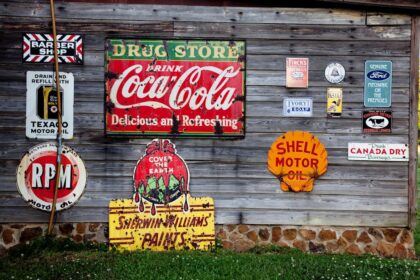The Foundation: Understanding Your YouTube Ad Ecosystem
Beyond simple bidding, achieving maximum YouTube ad impact hinges on a holistic understanding of your campaign environment. Effective budget allocation begins not with arbitrary numbers but with a comprehensive grasp of your strategic objectives, the diverse ad formats available, and the intricate mechanisms of audience targeting. Every dollar spent on YouTube ads should be a deliberate investment, guided by a clear vision of its expected return. This foundational knowledge empowers marketers to move beyond reactive adjustments to proactive, data-driven budget orchestration.
Defining clear objectives is the bedrock of any successful allocation strategy for YouTube ad campaigns. Without precise goals, budget becomes diffuse, and performance metrics lose their meaning. Objectives dictate everything: the ad formats chosen, the bidding strategies employed, the audiences targeted, and ultimately, how success is measured.
- Brand Awareness & Reach: For businesses prioritizing visibility and broad market penetration, the primary objective is to maximize the number of unique viewers exposed to their brand message. This phase focuses on building top-of-funnel recognition, ensuring the brand stays front-of-mind. Key metrics include impressions, unique reach, viewability, and brand lift studies (measuring ad recall, brand awareness, and consideration). Budget allocation here leans towards reaching the largest relevant audience efficiently.
- Lead Generation & Conversions: When the goal is to acquire new prospects or drive specific actions (e.g., newsletter sign-ups, whitepaper downloads, form submissions), the budget shifts towards optimizing for conversions. This involves guiding potential customers down the marketing funnel towards a measurable action. Critical performance indicators include cost-per-acquisition (CPA), conversion rate, and lead quality. The allocation must prioritize audiences most likely to convert and ad formats designed for direct response.
- Sales & Revenue: The ultimate objective for many e-commerce businesses or service providers is direct sales and revenue generation. Here, every ad dollar is scrutinized for its direct contribution to the bottom line. Return on Ad Spend (ROAS) becomes the paramount metric, alongside conversion value, average order value (AOV), and customer lifetime value (CLTV). Budget allocation focuses on high-intent audiences and direct-response formats that facilitate immediate purchases.
- Customer Engagement & Loyalty: Beyond initial acquisition, fostering lasting relationships with existing customers is crucial for sustainable growth. Objectives in this category include increasing repeat purchases, driving engagement with new content, promoting loyalty programs, or encouraging product reviews. Metrics like watch time on specific content, repeat views, engagement rate (likes, comments, shares), and ultimately, customer retention rates guide budget decisions. Allocation targets existing customer lists or highly engaged past viewers.
The YouTube ad formats offer a versatile palette for marketers, each designed to serve different strategic objectives and fit varying budget scales. Understanding their unique characteristics is crucial for intelligent allocation.
- Skippable In-Stream Ads: These appear before, during, or after other videos and can be skipped after 5 seconds. They are billed on a cost-per-view (CPV) basis or via target CPA/ROAS for conversion goals. They are highly versatile, suitable for both awareness (if watched beyond 30 seconds or interaction occurs) and conversion objectives (with strong calls-to-action). A significant portion of the budget is often allocated here due to their widespread use and flexibility.
- Non-Skippable In-Stream Ads: Up to 15-20 seconds long, these ads play before or during a video and cannot be skipped. They are billed on a CPM (cost-per-mille or thousand impressions) basis. Ideal for brand awareness and recall, they guarantee message exposure. Given their higher CPM, budget allocation must consider the premium for guaranteed views, often reserving them for high-impact branding campaigns.
- Bumper Ads: Short, non-skippable ads up to 6 seconds long, also billed on a CPM basis. They are perfect for delivering concise, memorable messages and driving massive reach at the top of the funnel. Their lower cost per impression makes them budget-friendly for amplifying brand recognition.
- In-Feed Video Ads (formerly TrueView Discovery Ads): These appear in YouTube search results, next to related videos, or on the YouTube mobile homepage. They invite clicks to watch the full video and are billed on a CPV basis. Excellent for driving consideration, guiding users to longer-form content, or showcasing product features. Budget allocation here supports users actively searching for content, making it efficient for discovery.
- Outstream Ads: These mobile-only ads appear on Google video partners’ websites and apps outside of YouTube, designed to expand reach beyond the platform. They start playing with the sound off and users can tap to unmute. Billed on a viewable CPM (vCPM) basis, they are effective for broadening awareness and consideration, especially for audiences not primarily on YouTube.
- Masthead Ads: A premium placement appearing at the top of the YouTube homepage across all devices. They are reservation-based and billed on a fixed cost-per-day (CPD) or CPM basis. Extremely expensive, these are reserved for large brands with significant budgets aiming for massive, immediate reach and dominant brand presence during specific periods (e.g., product launches).
- TrueView for Action: A variant of skippable in-stream and in-feed ads, specifically optimized for conversions. They include prominent, customizable calls-to-action (CTAs) during and after the video. Primarily focused on driving leads, sales, or website traffic, budget allocation for these campaigns directly ties into CPA or ROAS goals, leveraging Smart Bidding strategies.
- TrueView for Reach: Another variant of skippable in-stream ads, optimized to achieve maximum unique reach at an efficient CPM. Ideal for awareness and consideration campaigns where the goal is to show the ad to as many unique users as possible within a target audience.
- Video Action Campaigns (VACs): Google’s streamlined campaign type that consolidates the best features of TrueView for Action and other formats to drive conversions across YouTube and Google video partners. VACs leverage Smart Bidding (Target CPA, Maximize Conversions) and automatically serve ads across YouTube, Google video partners, and the Google Display Network. This simplified structure makes them a strong choice for conversion-focused budget allocation, allowing the algorithm to optimize delivery for the desired action.
Audience targeting demystified enables precision for every dollar spent. Wasted impressions or clicks occur when ads are shown to irrelevant audiences. YouTube’s robust targeting options allow advertisers to hone in on their ideal customer, making budget allocation far more efficient.
- Demographics: Basic targeting by age, gender, parental status, and household income allows for foundational segmentation. For instance, a luxury product might exclude lower household income brackets to conserve budget, or a toy brand might target parents specifically.
- Audiences:
- Affinity Audiences: Broad categories based on users’ interests and passions (e.g., “Auto Enthusiasts,” “Beauty Mavens”). Good for upper-funnel awareness when seeking large, generally interested groups.
- Custom Affinity Audiences: More tailored versions of affinity audiences, created by combining interests, URLs, or apps. Allows for greater precision than standard affinity, e.g., targeting users interested in “organic skincare” instead of just “Beauty Mavens.”
- In-Market Audiences: Users who are actively researching products or services similar to yours and are likely to make a purchase soon (e.g., “Automotive: SUVs,” “Apparel & Accessories: Women’s Clothing”). Highly valuable for consideration and conversion stages, as they indicate strong purchase intent. Budget allocation here is typically higher due to conversion potential.
- Custom Intent Audiences: Created by inputting specific keywords, URLs, or apps that users might research or visit when considering a purchase. This allows targeting users based on what they’re actively searching for on Google, providing extremely high intent signals. An excellent choice for conversion-focused campaigns.
- Life Events: Targets users undergoing significant life changes (e.g., “Graduating from College,” “Moving,” “Getting Married”). Useful for products/services relevant to these life stages.
- Remarketing: Re-engaging users who have previously interacted with your brand. This is one of the most cost-effective forms of targeting for conversion and loyalty objectives.
- Website Visitors: Users who visited your website but didn’t convert.
- App Users: Users who interacted with your mobile app.
- Customer Lists: Uploading CRM data (email addresses, phone numbers) to target existing customers or create lookalike audiences.
- YouTube Viewers: Users who watched your YouTube videos, subscribed to your channel, or visited your channel page. This is incredibly powerful for nurturing warm leads and fostering loyalty. Budget allocated to remarketing often yields the highest ROAS due to the inherent interest of the audience.
- Content Placements: Targeting specific channels, videos, video lineups, or topics where your ads will appear.
- Channels: Selecting specific YouTube channels relevant to your niche.
- Videos: Targeting individual YouTube videos. Highly granular but requires extensive research.
- Video Lineups: Curated groups of popular YouTube channels by Google Ads, often used for reaching specific audiences at scale.
- Topics: Targeting based on the broad subject matter of YouTube videos/channels (e.g., “Sports,” “Cooking”). Less precise than placements but broader.
- Keywords: Targeting users based on the search terms they use on YouTube or Google. Can be applied to specific video content or search queries, ensuring your ad appears when users are actively looking for related information. This is particularly effective for in-feed video ads or for reaching users with very specific intent.
Strategic Budget Allocation Frameworks
Moving beyond the fundamentals, strategic budget allocation requires a framework that guides decisions from a macro level down to granular campaign settings. This involves considering overall budgeting approaches, funnel-based distribution, and geographical and device-specific nuances.
Top-Down vs. Bottom-Up Budgeting: Two primary approaches dictate how an overall marketing budget is determined and subsequently distributed.
- Top-Down Budgeting: An overall marketing budget is set at a high level (e.g., “We have $50,000 for YouTube ads this quarter”). This budget is then distributed among campaigns and objectives. This approach is often simpler and suitable when there are fixed budget constraints, but it can sometimes lead to underfunding or overfunding specific initiatives if not carefully aligned with performance goals. It prioritizes overall financial limits.
- Bottom-Up Budgeting: Budget is built by determining the cost of achieving specific campaign objectives. For instance, if the goal is to acquire 1,000 leads at an average CPA of $20, then $20,000 is needed for that specific campaign. This sum is then aggregated across all campaigns to determine the total budget. This approach is highly performance-driven and ensures each dollar is tied to a measurable outcome, but it requires detailed forecasting and a clear understanding of target KPIs. The most effective approach often blends these two: start with a top-down allocation based on overall marketing spend, then validate and refine it using a bottom-up, performance-driven approach.
The Funnel-Based Allocation Model (Awareness, Consideration, Conversion, Loyalty) is perhaps the most robust framework for YouTube ad budget allocation. It recognizes that different stages of the customer journey require different strategies, ad formats, targeting, and, crucially, budget emphasis.
- Awareness Phase: Maximizing Reach & Impressions. At the top of the funnel, the objective is to introduce the brand or product to a broad, relevant audience.
- Budget Allocation: This phase typically receives a higher share of the overall budget, as it requires reaching a large volume of unique users. The focus is on efficient reach rather than immediate conversions. Bidding strategies like CPM, vCPM, or CPV are common.
- Ad Formats: Skippable In-Stream (for broad exposure), Non-Skippable In-Stream (for guaranteed message delivery), Bumper Ads (for concise, memorable branding), and Masthead Ads (for premium, high-impact visibility) are ideal. TrueView for Reach campaigns are specifically designed for this.
- Metrics: Impressions, unique reach, frequency, viewability, and brand lift metrics (ad recall, brand awareness, consideration lift) are paramount. The goal is to maximize the number of eyes on the brand story.
- Creative Focus: Engaging, high-quality video that grabs attention quickly and communicates core brand values. Shorter formats like bumper ads require extreme brevity and clarity.
- Consideration Phase: Driving Engagement & Interest. Once aware, users move into a phase where they are exploring options and seeking more information. The goal here is to foster deeper engagement and encourage exploration of your offerings.
- Budget Allocation: This phase receives a significant, but often slightly smaller, share than awareness. It shifts from pure reach to quality engagement. Bidding strategies may still include CPV but also focus on click-through rate (CTR) or cost-per-click (CPC) if driving traffic to landing pages for more information.
- Ad Formats: In-Feed Video Ads (for discovery and longer-form content), Skippable In-Stream (if the creative encourages clicks for more information), and Outstream Ads (for expanded reach on partner sites) are effective.
- Metrics: Views, watch time, click-through rate (CTR) to website/landing page, engagement rate (likes, comments), and initial website engagement metrics (bounce rate, pages per session).
- Creative Focus: Longer-form video that educates, demonstrates product features, tells a story, or offers valuable information. Call-to-actions should encourage further exploration.
- Conversion Phase: Optimizing for Action. At the bottom of the funnel, the objective is to drive a specific, measurable action – a purchase, a lead submission, an app download.
- Budget Allocation: This phase often receives a substantial share, or even the largest share, of the budget because it directly impacts revenue or lead generation. The focus is on efficiency of conversion. Bidding strategies like Target CPA, Maximize Conversions, Target ROAS, or Maximize Conversion Value are critical.
- Ad Formats: TrueView for Action, Video Action Campaigns (VACs), and highly optimized Skippable In-Stream ads with strong, clear calls-to-action are essential. These formats are designed to integrate conversion elements directly into the ad experience.
- Metrics: Conversions, conversion rate, cost per conversion (CPA), return on ad spend (ROAS), and conversion value. These directly measure the campaign’s contribution to business goals.
- Creative Focus: Direct, clear, persuasive video that highlights benefits, addresses pain points, and provides a compelling reason to act now. Strong, easily identifiable CTAs are paramount. Urgency or scarcity can be effective.
- Loyalty/Retention Phase: Nurturing Existing Customers. This often overlooked phase focuses on maximizing customer lifetime value (CLTV) by fostering repeat engagement, purchases, or advocacy.
- Budget Allocation: A smaller but dedicated portion of the budget, as these audiences are already high-value. The investment is in retention and expansion rather than initial acquisition. Bidding might be based on engagement (CPV) for content, or specific conversion goals (CPA) for repeat purchases.
- Ad Formats: Skippable In-Stream and In-Feed Ads are versatile. Focus on new product announcements, loyalty program benefits, exclusive content, or educational videos to deepen engagement.
- Metrics: Repeat purchases, customer lifetime value (CLTV), engagement with loyalty content, referrals, and positive reviews.
- Creative Focus: Content that provides value to existing customers, showcases new products they might appreciate, offers exclusive deals, or reinforces brand community. Personalized messaging can be highly effective.
Geographical Budget Allocation requires careful consideration of local, regional, and global nuances. A blanket approach to spending across all locations is rarely optimal.
- Geo-targeting Strategies: Utilize YouTube’s detailed geo-targeting options to focus spend where your audience is concentrated or where your business has a physical presence. This can range from countries, regions, cities, down to specific postal codes or even radius targeting around a business location.
- Local Market Saturation: In highly saturated local markets, higher bids might be necessary to compete, or the budget might need to be spread thinner across more specific audiences. Conversely, in less competitive areas, more efficient spend might be possible. Analyze local search interest, competitor activity, and population density.
- A/B Testing Geo-Splits: If unsure about the potential of different regions, allocate a portion of the budget to A/B test performance across various geographical segments. This allows for data-driven reallocation towards regions yielding the best ROAS or lowest CPA. For businesses with physical locations, allocating more budget to areas within a reasonable driving distance of a store can be highly effective. For global campaigns, consider cultural nuances in creative and messaging, which can influence how budget is received and converted in different regions. Time zone differences also impact ad scheduling.
Device-Specific Budgeting (Mobile, Desktop, TV Screens) acknowledges that user behavior, ad consumption patterns, and conversion likelihood vary significantly across devices.
- User Behavior Differences: Mobile users are often on the go, seeking quick information or entertainment. Desktop users may be more focused on research or longer-form content. TV screen users are typically in a relaxed, lean-back viewing environment, making them ideal for brand awareness but less so for immediate clicks.
- Conversion Paths by Device: Mobile typically has lower conversion rates for complex purchases due to smaller screens and potential friction in checkout processes, but higher video views. Desktop often sees higher conversion rates for detailed purchases. TV screens are almost exclusively for awareness and don’t facilitate direct clicks, so budget allocated here is purely for branding and reach.
- Performance Tracking Per Device: Meticulously track performance by device in Google Ads. If mobile CPA is significantly higher than desktop for conversion campaigns, consider reducing mobile bids or allocating a smaller percentage of the budget to mobile, while perhaps increasing it for desktop. Conversely, if brand awareness is the goal, mobile and TV screens might receive a larger share due to their widespread use for video consumption. Adjust bid modifiers by device to optimize spend. For example, a negative bid modifier for mobile on a conversion campaign might be appropriate if mobile conversions are consistently underperforming, while a positive modifier on TV screens for a brand awareness campaign could boost reach.
The Art of Campaign Structure & Budget Implementation
The way a YouTube ad account is structured and how bids are implemented directly impacts budget efficiency and the ability to optimize effectively. A well-organized account simplifies management and provides granular control over spending.
Account Structure: Simplifying Management, Maximizing Control. An intelligent account structure is foundational for effective budget allocation and optimization.
- Campaign Grouping by Objective: Organize campaigns based on your marketing funnel goals. For example, separate campaigns for “Brand Awareness – Skippable,” “Lead Generation – TrueView for Action,” and “Remarketing – Sales.” This clear delineation allows you to allocate specific budgets to each objective and measure their unique performance independently. It prevents budget from one objective (e.g., brand awareness) accidentally eating into another (e.g., sales).
- Ad Group Structuring: Within each campaign, create distinct ad groups. Ad groups can be structured by audience (e.g., “In-Market Audience – Home Decor,” “Custom Intent – Kitchen Remodel”), ad format (e.g., “Bumper Ads – Product A,” “Non-Skippable – Brand Story”), or creative theme (e.g., “Short-Form Ad 1,” “Long-Form Ad 2”). This allows for targeted budget allocation and tailored messaging to specific segments within a campaign. Each ad group can have its own set of bids and targeting settings, enabling granular control over spending.
- Leveraging Shared Budgets vs. Campaign-Specific Budgets:
- Campaign-Specific Budgets: Each campaign has its own daily budget. This is ideal for campaigns with distinct, non-negotiable budget caps, or when you want strict control over how much is spent on a particular objective (e.g., “I will spend exactly $100/day on lead generation”). It provides predictability.
- Shared Budgets: A single budget amount is set across multiple campaigns, and Google Ads automatically distributes that budget among them based on performance. This is beneficial when you want Google’s algorithm to optimize spend across related campaigns to achieve an overall goal (e.g., “I have $500/day to get as many conversions as possible across my two conversion campaigns”). It can be more efficient for maximizing overall performance but requires trust in the algorithm and close monitoring to ensure balanced spend if campaigns have vastly different CPAs or ROAS targets. Shared budgets are particularly effective for funnel-stage campaigns where you want fluid movement of spend to where conversions are most likely.
Bid Strategies: Orchestrating Your Spend. Bid strategies are the core mechanism for telling Google how to spend your budget. The choice of strategy profoundly impacts how your budget is allocated and the results you achieve.
- Target CPA (Cost-Per-Acquisition): You set an average CPA you want to achieve, and Google Ads automatically adjusts bids to help you get as many conversions as possible at or below that target. This is highly effective for conversion-focused campaigns where you know your desired acquisition cost. Budget allocation here is driven by the potential to meet the CPA target.
- Target ROAS (Return on Ad Spend): You set a target percentage return on your ad spend, and Google Ads optimizes bids to maximize conversion value at that ROAS. Ideal for e-commerce or campaigns focused on revenue generation. Budget is allocated to opportunities that promise the highest return.
- Maximize Conversions: Google Ads automatically sets bids to get the most conversions possible within your daily budget. This is suitable when the primary goal is conversion volume and you don’t have a specific CPA target in mind, or if you’re just starting out and want to gather conversion data. The algorithm will spend the entire budget to get as many conversions as possible.
- Maximize Conversion Value: Similar to Maximize Conversions but optimizes for the total value of conversions rather than just the number. Useful if different conversions have different monetary values (e.g., a high-value purchase vs. a low-value one).
- Target Impression Share: You set a target percentage of impressions you want to capture (e.g., 80% of eligible impressions) and a placement (top of page, absolute top of page, anywhere on page). Google Ads adjusts bids to achieve this. Primarily for brand awareness or visibility campaigns where controlling impression share is crucial.
- Viewable CPM (vCPM): You bid for impressions that are viewable (at least 50% of the ad is on screen for 2 seconds or more for video ads). Used for branding campaigns where guaranteed viewability is important.
- Maximize Bids (Manual CPM/CPV): You manually set your bids. This offers maximum control but requires significant monitoring and manual adjustment to optimize performance. It’s often used by experienced advertisers who want very precise control over their spend, or in situations where smart bidding data isn’t yet sufficient.
- Understanding Smart Bidding & Data Requirements: Google’s Smart Bidding strategies leverage machine learning to optimize bids in real-time. For them to be effective, they require sufficient conversion data. Generally, aim for at least 15-30 conversions per month per campaign for Target CPA/ROAS to learn and perform optimally. Without enough data, these strategies may struggle to learn and spend budget efficiently. Start with Maximize Conversions to gather data, then transition to more specific target-based strategies.
Ad Scheduling & Dayparting: Timing is Everything. Not all hours or days of the week are equally effective for reaching your audience and achieving your goals.
- Peak Performance Hours/Days: Analyze historical campaign data (or general industry trends) to identify when your target audience is most active and most likely to convert. For example, B2B leads might convert during business hours, while consumer purchases might peak in the evenings or weekends. Allocate a higher percentage of your daily budget to these peak periods.
- Avoiding Wasted Spend During Off-Peak: Conversely, reduce bids or completely pause ads during times when performance is historically low (e.g., middle of the night for most businesses). This prevents wasted impressions or clicks when your audience is less receptive or unlikely to convert, freeing up budget for more impactful periods.
- Global Time Zone Considerations: If targeting multiple time zones, ensure your ad scheduling is adjusted accordingly. What’s prime time in New York is not prime time in London or Tokyo. Set up separate campaigns or ad groups for different geographic regions if their optimal ad schedules differ significantly. This granular control ensures your budget is always spent when the audience is most engaged.
Frequency Capping: Preventing Ad Fatigue & Wasted Impressions. Showing the same ad to the same person too many times can lead to ad fatigue, annoyance, and diminishing returns on your budget.
- Brand Awareness vs. Conversion Goals: For brand awareness, a higher frequency might be acceptable to ensure message recall (e.g., 3-5 impressions per user per week). For conversion campaigns, a lower frequency might be preferred to avoid annoying users, especially if they haven’t converted after multiple exposures.
- Industry Benchmarks: Research average effective frequencies for your industry. Some studies suggest optimal frequency ranges from 3-7 exposures over a given period for brand recall, but too high can lead to negative sentiment.
- Granular vs. Campaign-Level Capping: YouTube Ads allows you to set frequency caps at the campaign level (e.g., 3 impressions per user per 7 days). This is crucial for controlling how often individual users see your ads and preventing budget from being spent on oversaturation. Monitor your frequency metrics (average impression frequency) closely and adjust caps as needed. If your frequency is too high and performance is dropping, lower the cap to prevent burnout and reallocate budget to new users or different creatives.
Advanced Budget Optimization & Scaling
Once initial campaigns are live and data starts flowing, the true brilliance of budget allocation comes to light through continuous optimization, A/B testing, and strategic scaling. This iterative process ensures that every dollar continues to work harder over time.
A/B Testing & Experimentation: Data-Driven Allocation Shifts. Rigorous testing is the cornerstone of informed budget reallocation. Without controlled experiments, it’s impossible to definitively attribute performance changes to specific variables.
- Creative Variations: Test different versions of your video ads.
- Short vs. Long Form: Does a 15-second spot or a 60-second narrative perform better for a given objective?
- Different CTAs: Which call-to-action (e.g., “Shop Now,” “Learn More,” “Get a Quote”) resonates most strongly and drives the desired action?
- Different Hooks/Storylines: Which opening captures attention most effectively? Which narrative arc leads to higher engagement or conversion rates?
- Allocate a portion of your budget to testing new creatives. Once a winning creative is identified, shift a larger portion of the budget to it, while pausing or reducing spend on underperforming ones.
- Audience Segments: Experiment with different audience types.
- Lookalikes vs. In-Market vs. Custom Intent: Which audience segment delivers the best CPA or ROAS for your conversion campaigns? Which provides the most cost-effective reach for awareness?
- Demographic Splits: Test performance across different age groups, genders, or income brackets to identify high-value segments.
- Gradually shift budget from less efficient audience segments to those delivering superior results.
- Bid Strategies: Test the effectiveness of different bid strategies.
- Target CPA vs. Max Conversions: Which strategy provides a better balance of conversion volume and cost efficiency once enough data is available?
- Manual Bidding vs. Smart Bidding: For experienced users, sometimes manual control over specific bids can outperform automated strategies in niche scenarios, but often smart bidding, given sufficient data, will be more efficient.
- Allocate a small, controlled budget to experiments comparing bid strategies before committing widespread changes.
- Landing Page Variations: While not directly a YouTube Ads setting, the landing page profoundly impacts conversion rates. Test different landing page designs, messaging, and calls-to-action. If a specific landing page variant significantly improves conversion rates, the existing YouTube ad budget will become inherently more effective, improving CPA or ROAS without increasing ad spend.
- Significance: Ensure your A/B tests run long enough and gather enough data to achieve statistical significance before making major budget reallocations based on the results. Small differences in performance might just be noise.
Performance Analysis: Beyond Vanity Metrics. Effective budget optimization demands a deep dive into data, moving beyond easily accessible metrics to truly understand campaign impact.
- Key Performance Indicators (KPIs) Relevant to Objectives: Always align your analysis with your initial objectives.
- For Awareness: Unique reach, frequency, brand lift, viewable impressions.
- For Consideration: Views, watch time, CTR, engagement rate, website visits.
- For Conversion: Conversions, conversion rate, CPA, ROAS, conversion value.
- Do not get sidetracked by high view counts if your goal is sales and your conversion rate is abysmal.
- Attribution Models: Understanding which touchpoints contributed to a conversion is vital for accurate budget allocation.
- Last Click: Attributes 100% of the conversion credit to the last ad interaction before conversion. Simple, but undervalues earlier touchpoints.
- Linear: Distributes credit equally across all touchpoints in the conversion path.
- Time Decay: Gives more credit to touchpoints closer in time to the conversion.
- Data-Driven: (If available in your Google Ads account with sufficient data) Uses machine learning to algorithmically assign credit based on actual user behavior. This is generally the most accurate.
- Different attribution models can show varying ROAS for the same campaign, influencing where you choose to allocate budget. If a campaign appears to have a low ROAS on a “Last Click” model but is consistently initiating conversion paths (high assisting conversions), a “Data-Driven” model might reveal its true value, justifying continued or increased budget.
- Incremental Lift Studies (Brand Lift, Conversion Lift): These are advanced studies that measure the true incremental impact of your ads by comparing exposed vs. control groups.
- Brand Lift Studies: Measure the uplift in metrics like ad recall, brand awareness, consideration, favorability, and purchase intent. Essential for validating awareness-focused budget spend.
- Conversion Lift Studies: Measure the incremental impact of your ads on actual conversions. This helps prove that your ads are driving new conversions, not just capturing conversions that would have happened anyway.
- These studies provide robust evidence for the value of your YouTube ad spend, justifying budget allocation to specific campaigns or even to the platform as a whole.
- Understanding the “Why” Behind Performance Fluctuations: Don’t just observe changes; investigate their root causes.
- Did a competitor launch a new campaign? Is there a seasonal trend? Did a new creative underperform? Was there a change in audience behavior?
- This diagnostic approach prevents knee-jerk reactions and enables targeted budget adjustments.
Budget Pacing & Adjustment: Dynamic Allocation. Budgets are not static; they require dynamic adjustment based on performance, seasonality, and overall business goals.
- Daily vs. Lifetime Budgets:
- Daily Budgets: Most common. Google aims to spend your daily budget each day, though it can spend up to 2x your daily budget on any given day if opportunities arise (and balance out over the month). This offers consistent daily spend.
- Lifetime Budgets: For campaigns with a fixed end date. Google optimizes spend over the entire campaign duration, allowing for fluctuations day-to-day but aiming to spend the total amount by the end. Useful for promotional periods or fixed-duration campaigns.
- Monitoring Spend Velocity (Under-Pacing, Over-Pacing):
- Under-pacing: If a campaign isn’t spending its full daily budget, it might indicate limited audience size, low bids, or overly restrictive targeting. Consider increasing bids, expanding targeting, or experimenting with “Maximize Conversions” to accelerate spend and ensure the budget is fully utilized.
- Over-pacing: If a campaign is spending too quickly, it might hit its daily cap prematurely, missing out on valuable opportunities later in the day. Consider increasing the daily budget if performance is strong, or slightly reducing bids to smooth out spend.
- Seasonal Adjustments & Promotional Periods: Allocate significantly higher budgets during peak seasons (e.g., Q4 for retail, holiday sales, Black Friday) or during specific promotional periods. Conversely, reduce spend during off-peak times. Pre-plan these budget shifts well in advance.
- Reallocating from Underperforming to Overperforming Campaigns: This is the core of dynamic budget allocation. Regularly review campaign performance:
- Identify campaigns or ad groups with high CPA/low ROAS relative to targets. Pause them, reduce their budget, or optimize their settings.
- Identify campaigns or ad groups exceeding their performance targets (low CPA/high ROAS). Increase their budget to capture more conversions or revenue.
- This constant shifting of funds towards what’s working best maximizes the overall impact of your total YouTube ad spend.
Leveraging Audience Insights & Data Signals. The richer your data, the smarter your budget decisions can be. Integrating various data sources provides a more complete picture of your audience and campaign effectiveness.
- Google Analytics Integration for Deeper Insights: Link your Google Ads account with Google Analytics. This allows you to see how users behave on your website after clicking your YouTube ads (e.g., bounce rate, pages per session, time on site, conversion paths). These post-click metrics provide invaluable context beyond just the click or view.
- YouTube Analytics for Video Performance: Dive into the organic YouTube Analytics for your channel. What videos are resonating? Which audience segments are most engaged with your organic content? This can inform your paid ad strategy, helping you identify successful content formats, video lengths, or topics that deserve more budget.
- First-Party Data Utilization (CRM Lists): Upload your customer relationship management (CRM) lists (email addresses, phone numbers) to Google Ads.
- Target Existing Customers: For loyalty campaigns, new product announcements, or upsell opportunities.
- Create Lookalike Audiences (Customer Match): Find new users who share similar characteristics to your best customers. These audiences often perform exceptionally well for acquisition campaigns, justifying a higher budget allocation.
- Custom Segments Based on Observed Behavior: Create custom segments in Google Analytics or Google Ads based on specific website behaviors (e.g., users who viewed a product page but didn’t add to cart, users who spent more than 5 minutes on your site). These granular segments can be remarketed to with highly relevant YouTube ads, leading to highly efficient conversion spend.
Scaling Your YouTube Ad Spend Responsibly. Once campaigns are consistently performing well, the natural next step is to scale. However, reckless scaling can quickly lead to diminishing returns.
- Gradual Budget Increases (e.g., 10-20% at a time): Avoid doubling or tripling your budget overnight. Incremental increases allow Google’s Smart Bidding algorithms to adapt and find new converting opportunities without shocking the system or immediately driving up CPAs. Monitor performance closely after each increase.
- Expanding Audience Reach Carefully: As you increase budget, you’ll need to expand your audience to avoid over-saturating existing segments. This could mean adding new lookalike audiences, broadening geo-targeting slightly, or exploring new in-market/custom intent segments. Always test new audiences with a smaller budget first.
- Diversifying Ad Formats and Creatives: To sustain performance at higher budget levels, you’ll likely need to produce more diverse creative assets. Running the same ad repeatedly to a larger audience will quickly lead to fatigue. Experiment with different lengths, messages, and calls-to-action to keep the ad experience fresh. Also, diversify across ad formats (e.g., if you’ve only been using Skippable In-Stream, try Video Action Campaigns).
- Monitoring Diminishing Returns: At some point, increasing budget further may lead to disproportionately higher CPAs or lower ROAS. This indicates you’re reaching market saturation or exhausting your highest-value audience segments. Be prepared to hit a ceiling and optimize within that limit, or explore new strategies or markets entirely.
- The Importance of New Creative Refresh: As you scale, the rate at which your audience sees your ads increases. This necessitates a more frequent refresh of your creative assets. Stale ads lead to fatigue and declining performance, rendering increased budget ineffective. Plan for regular creative updates as part of your budget allocation.
Pitfalls to Avoid & Best Practices for Sustained Budget Brilliance
Even with a solid framework, common mistakes can derail YouTube ad budget efficiency. Adhering to best practices and staying adaptable ensures long-term success.
Common Budget Allocation Mistakes: Avoiding these pitfalls can save significant ad spend.
- Setting it and Forgetting It (Lack of Ongoing Optimization): The most egregious error. YouTube ad campaigns are not “set it and forget it.” Performance fluctuates daily, and constant monitoring, analysis, and adjustment are crucial. Without ongoing optimization, budget will inevitably be wasted on underperforming segments or creatives.
- Spreading Budget Too Thin (Diluting Impact): Allocating tiny budgets across too many campaigns, ad groups, or audiences can prevent any single element from gathering enough data to optimize effectively. It also dilutes your presence, making it harder to break through the noise. It’s often better to concentrate budget on a few high-potential campaigns and scale those, rather than thinly funding many.
- Ignoring Negative Placements/Keywords (Wasted Spend): Just as important as targeting what you want is excluding what you don’t want. Regularly review where your ads are showing (placements report) and add irrelevant or low-performing channels/videos to your negative placements list. For keyword targeting, add negative keywords to prevent showing for irrelevant searches. This directly prevents wasted impressions and clicks.
- Not Tracking Offline Conversions (Incomplete Picture): For businesses with offline sales (e.g., retail stores, call centers), failing to track these conversions back to online ad spend leaves a massive blind spot. Implement conversion tracking for calls, in-store visits (if applicable), or use CRM integration to upload offline conversions. Without this, your ROAS calculation is incomplete, potentially leading to misallocation of budget away from campaigns that are actually driving significant value.
- Over-reliance on Single Ad Format/Audience: Sticking to just one ad format or targeting strategy limits your reach and potential for optimization. Diversify to test what resonates best across different funnel stages and audience segments. A single point of failure in your strategy can become a huge budget drain.
- Sacrificing Brand Safety for Reach: While reaching a broad audience is a goal, ensure your ads are not appearing on inappropriate or low-quality content. Utilize content suitability settings, exclusion lists, and regular placement reviews to protect your brand image and prevent budget from being spent on valueless or damaging placements.
Measuring ROAS (Return on Ad Spend) Holistically: ROAS is not just a number from your Google Ads dashboard. Its true measure encompasses broader business impacts.
- Beyond Direct Revenue: Brand Lift, Search Uplift, LTV: Direct conversion ROAS is critical, but remember the halo effect of YouTube advertising. Awareness campaigns, even if they don’t drive immediate clicks, can lead to increased direct website visits, branded organic searches, and future conversions. Brand lift studies quantify this. Understanding customer lifetime value (CLTV) generated from YouTube-acquired customers provides a more accurate long-term ROAS. A customer acquired via YouTube ads might have a slightly higher initial CPA, but if their CLTV is significantly higher, that acquisition budget was well spent.
- Multi-touch Attribution Challenges: As discussed, conversions are rarely linear. Your YouTube ad might be an early touchpoint, influencing later searches or direct visits that lead to conversion. Acknowledge the role of YouTube ads in a multi-channel customer journey and use data-driven attribution models when possible to give credit where credit is due.
The Role of Creative in Budget Efficiency: Even the most perfectly allocated budget will fail if the underlying creative is poor. High-quality, relevant video content is paramount.
- High-Quality Video Production: Professional, engaging video ads stand out. Poor production quality can instantly undermine your message and waste impressions. Invest in good storytelling, visuals, and sound.
- Tailoring Creative to Audience and Funnel Stage: A general brand video won’t convert well at the bottom of the funnel, and a hard-sell ad might alienate cold audiences at the top. Tailor your video creative to the specific audience you’re targeting and the objective of that campaign (e.g., short, punchy for awareness; detailed explainer for consideration; clear CTA for conversion).
- Strong Call-to-Actions (CTAs): Every ad, especially those aimed at consideration or conversion, must have a clear, compelling call-to-action. What do you want the viewer to do next? Make it obvious and easy.
- Iteration and Refresh Cycle: Video ads experience “fatigue” faster than text ads. Plan for a regular refresh cycle for your creatives, especially for high-volume campaigns. Testing new creatives consistently and replacing underperformers is vital for sustained budget efficiency. Allocate a portion of your budget specifically for creative testing and development.
Continuous Learning & Adaptation: The digital advertising landscape is constantly evolving. What works today might not work tomorrow.
- Staying Updated with YouTube Ads Platform Changes: Google frequently rolls out new ad formats, targeting options, bid strategies, and analytics features. Subscribe to industry news, Google Ads blogs, and attend webinars to stay informed. Early adoption of effective new features can provide a competitive advantage and optimize budget.
- Competitor Analysis: Regularly monitor what your competitors are doing on YouTube. What kind of ads are they running? What audiences might they be targeting? Tools like the Google Ads Transparency Center can offer insights into competitor ad creative and spend patterns. This can inform your own strategy and help you identify gaps or opportunities in the market for your budget.
- Industry Trends and Benchmarks: Keep an eye on broader digital marketing trends, consumer behavior shifts, and industry benchmarks for YouTube ad performance (e.g., average CTRs, CPAs, ROAS for your vertical). This provides context for your own performance and helps set realistic budget expectations.
Ethical Considerations & Data Privacy (GDPR, CCPA): Responsible advertising is not just about performance; it’s about building trust and adhering to regulations.
- Transparent Data Collection: Be clear with users about what data you are collecting and how it will be used.
- User Consent: Ensure you have appropriate consent mechanisms in place for data collection, especially for remarketing or customer match lists. Adhere to global privacy regulations like GDPR (Europe) and CCPA (California).
- Building Trust: Ethical advertising practices foster trust with your audience, which can indirectly lead to higher engagement and conversion rates over time, making your ad budget more impactful in the long run. Missteps in data privacy can lead to fines, reputational damage, and a loss of audience trust, ultimately rendering ad spend ineffective.











